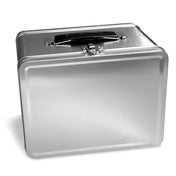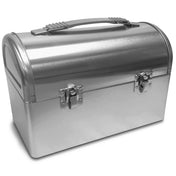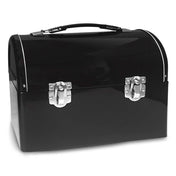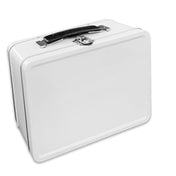We daydream all week about our weekend long run, but just the mere mention of a lifting a barbell or set of weights can ignite mild panic. But the reality is, runners need a regular strength-training routine to nab those race PRs.
The traditional technique used when weightlifting is to determine the maximum amount you can lift one time—called your “one-rep max”—and walking that back by a certain percentage in order to complete multiple reps and sets, based on your goals. In this approach, the percentage is increased as the number of reps is decreased.
For example, if your one-rep max for a back squat is 100 pounds, you might lift 50 pounds for a set of five to six reps, then increase to 70 pounds for a set of three to five reps, and finally do just one rep at 90 percent.
However, new research published in the Journal of Strength and Conditioning Research suggests there may be a different route—one that involves alternating the amount of weight that is lifted. This strategy, called velocity-based training, tailors the weights up or down for each session based on that day’s performance. If you’re feeling good and moving the weights faster, for instance, you would increase the load. But if you’re lagging a bit, you would reduce the weight.
Researchers compared the results of both training approaches in a small, six-week study of 16 men, all of whom had at least two years of weight lifting experience. The men performed exercises such as the bench press, overhead press, back squat, and deadlift, with half of the participants using the traditional, one-rep-max method, and the other half using the load-velocity strategy.
Those who used velocity as a marker for their training showed greater strength increases compared to the traditional group. For example, the velocity group could lift an average of 11 pounds more on the back squat from when they started, despite their training loads being about nine percent less at each session.
This method of lifting less could help significantly reduce fatigue during training, said Harry Dorrell, Ph.D., lead study author and lecturer in strength and conditioning at the University of Lincoln in the U.K.
“The main practical implication of this study is that it isn’t always about pushing to failure every time you train,” he told Runner’s World. “Our athletes using the velocity-based approach lifted significantly less—both in terms of repetitions completed and total load lifted—and yet got stronger and more powerful.”
The key to effective resistance training, he added, is choosing the load that will provide the most potential for adaptation. Velocity-based training often involves fewer reps, which means less fatigue between sets and training sessions, Dorrell added.
“That means each repetition they complete using such a method is more meaningful, stimulating a greater rate or potential for change,” he said.
For the non-professional weightlifter, the tricky aspect is figuring out how much you should actually be lifting—but calculating your one-rep max and using a percentage from there is as easy as tapping a few numbers into the calculator on your phone. Real velocity-based training requires measuring your actual velocity, not just how slow or fast a movement might feel.
Fortunately, there are plenty of devices capable of doing this, Dorrell said, including smartphone apps. Once you can capture data on your velocity, you can then develop a load-velocity profile and start to dictate training load with that information, he added. Then you’ll be well on your way to not only seeing gains in the gym and on the road, but also in other areas of your life, like your brain function.
Original article by Elizabeth Millard appears on Runner's World
Photo by Master1305 / Adobe






